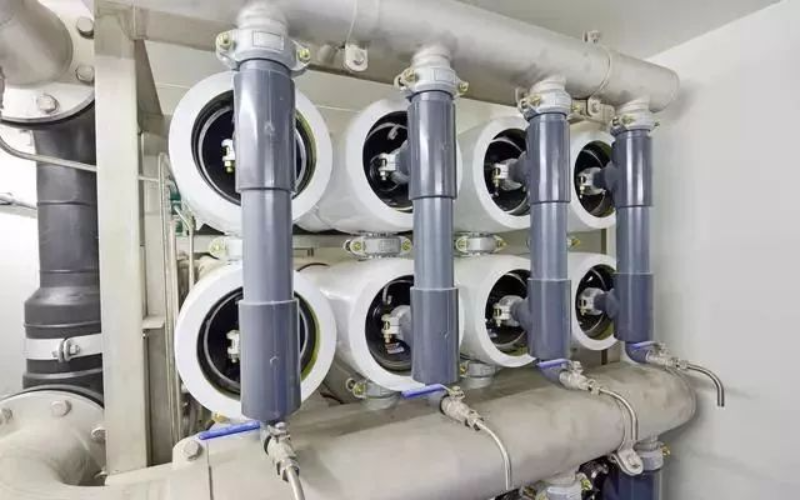(+86)0532-88988868

With the continuous development of science and technology, the manufacturing level of two-stage RO reverse osmosis equipment has also been continuously improved, but with it, the requirements for equipment installation and commissioning skills have become increasingly strict.
However, due to the complexity of the installation of two-stage RO reverse osmosis equipment, some fault problems still often occur in the actual installation and commissioning process. Therefore, it is of great significance to take correct measures to install and debug the two-stage RO reverse osmosis equipment to ensure the normal operation of the equipment.
Installation of reverse osmosis units
1. After the two-stage RO reverse osmosis equipment is transported to the site, it should be placed indoors, and the surrounding ambient temperature shall not be lower than 5 °C and higher than 38 °C. When the temperature is higher than 35°C, ventilation measures should be strengthened.
2. After the device arrives, it should be installed within one month, and the water test run should be carried out immediately. No valve shall be opened before the device has been tested with water.
3. After the device is in place, the supporting point of the device should be adjusted so that the component is in a basic horizontal position and has reliable contact with the foundation. The device and the water supply pump are connected and the valve should be degreased before connection, and the overflow part of the water supply pump should also be degreased.
4. The maximum output height of the water production pipe of the two-stage RO reverse osmosis equipment should be less than 8 meters. If the cleaning device and the R/O device are connected by a hard pipe, the inlet and return pipes shall not be laid directly on the ground to avoid damage.
Installation of reverse osmosis membrane modules
1. Check whether there is any abrasion or damage inside the pressure vessel, the leaking container needs to be replaced, rinse the pressure vessel with clean water to remove all dust and particles, clean up corrosion products or external impurities, and lubricate the pipe shell from 1/2 of the inclined plane to about 1/2 of the inclined plane.
2. Check whether there are defects on the surface of the membrane element, if there are defects, it should be dealt with in time to avoid scratching the container, pay attention to prevent the end of the membrane retraction and expansion device, if the defects can not be handled, contact the manufacturer of two-stage RO reverse osmosis equipment for processing.
3. Use about 50% glycerin-water mixture to lubricate the inside of the container, and you can use a cotton cloth of appropriate size to dip the mixture.
4. Lubricate the 0-type ring of the connector with a small amount of lubricant, connect the connector to the next membrane element, and install the next membrane element.
5. Connect all external pipelines, disassemble the pressure vessel and the membrane element, and the disassembly process is opposite to the installation process.
Commissioning of reverse osmosis units
1. Analyze and test the inlet water of the device, and the results show that it meets the requirements of the inlet water before the water commissioning of the device can be carried out.
2. Check whether the connection between all pipelines is perfect, whether the pressure gauge is complete, whether the connection of low-pressure pipelines is tight, and whether there is a shortage.
3. Start the pretreatment equipment, adjust the water supply to be greater than the total inlet of the device, and close the total inlet valve of the device without formaldehyde odor in the effluent.
4. Start the high-pressure pump, slowly open the total inlet valve of the device, control the total inlet pressure of the device is less than 0.5Mpa, wash for 5 minutes, and check whether the high and low pressure pipelines and instruments are normal.
5. Adjust the water inlet valve and concentrated water discharge valve to make the water inlet pressure reach 1, 0~1.4Mpa, test the water conductivity of the product, and open the product water outlet valve when it meets the requirements


